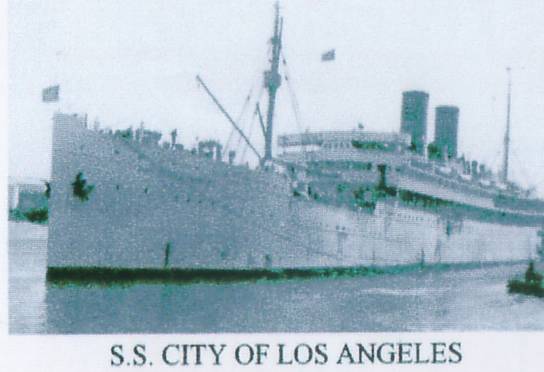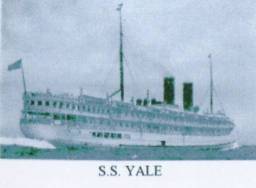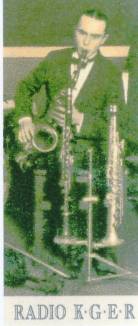Smith Scholarship Home
About Kenton O. Smith
How to Apply
STJS Foundation
STJS
CSU Sacramento Jazz Studies
Download application
Jazz Links |
|
Kenton O. Smith Traditional Jazz College Scholarship
Kenton Orrill Smith
Born in Portland, Oregon on October 14, 1904, Kenton was a natural musician and showman. At the age of 13, he purchsed a tenor
saxophone in a pawnshop and taught himelf to play the sax by ear.
Fueling his talent with passion, he achieved a rich, lyrical style. Kenton then mastered the clarinet, delivering liquid-sweet melodies, dazzling skeins of notes, and spirited
improvisations in his signature style of silky-smooth pure clarinet tones.
Kenton taught himself to read music and, at the age of 18, he found his first job in Hollywood playing in the theater orchestra pits for vaudevile and silent movies.
|
 |
 
|
Beginning in 1924, Kenton was a frequent soloist and bandleader for the dance orchestras on board the S.S. City of Los Angeles and S.S. Calawaii steamships with
service between Los Angeles and Honolulu, and the S.S. Yale and S.S. Harvard with service between Los Angeles and San Francisco. |
| Kenton's musical rainbow flourished under the blue skies of the Pacific until the early 1930s, when world
and local events caused a decline in transpacific and coastal steamship passenger service. |
In 1927, Kenton was employed by C. Merwin Dobyn, of Dobyn's Footwear, and Radio Station KGER in Long Beach to manage and perform with the
renowned KGER booadcast orchestras, the Patent Learher Kids, and the Strollers. Kenton was part of the first orchestra ever to broadcast in flight - a joint experiment between O'Donnell School of
Aviation and KGER. Kenton remained affiliated with radio broadcasting into the late 1930s.
As a multi-instrumentalist, Kenton was invaluable to the bands of the 1920s and 1930s. He playedwith the Fox West Coast Theater Band, Shell Orchestra, the Californians, Joe
Lindenbaum's Cocoanut Grove Orchestra and "Doc" Dickinson's Swing BAnd. Most indelible wre the jam sessions from Kenton's artistry and soul found their greatest expression. |
 |
| Kenton married in 1940 and subsequently moved to San Diego. In December 1941 the United States enteed WWII.
Eager to do his part, Kenton worked for Rohr Aircraft until the end of the war in 1945. On weekends, he Swing, "The Music that Symbolized Freedom Itself," with the Rohr Jive Bombers. |
| In the years that followed, Kenton drew upon his wit and natural salesmanship to support his family. His orchestra days had passed, but his
passion for jazz never waned. The Smith house was a magnet for jam session from Dixileand to Swing. Kenton's brilliance on the sax and clarinet was legendary. |
| He was in inpiration to young musicians and encouraged them to believe in themselves and in their music. High school jazz musicians knew the
Smith door was always open. They reveled int he opprtunity to sit in on Kenton's jam sessions, often adding their own sparks of genius to the set. |
 |
On April 2, 1972, at the age of 67, Kenton succumbed to cancer. To honor his musical legacy, the Kenton O. Smight Traditional
Jazz College Scholarship was establishd by his daughter to provided college music students with funds for tuition and books. |
Initially, the 2005 - 2006 award will be between $500 and $1500, depending upon applicant response and the judgement of the
scholarship committee. In subsequent years, the award will vary as the endowment fund grows.
|
|